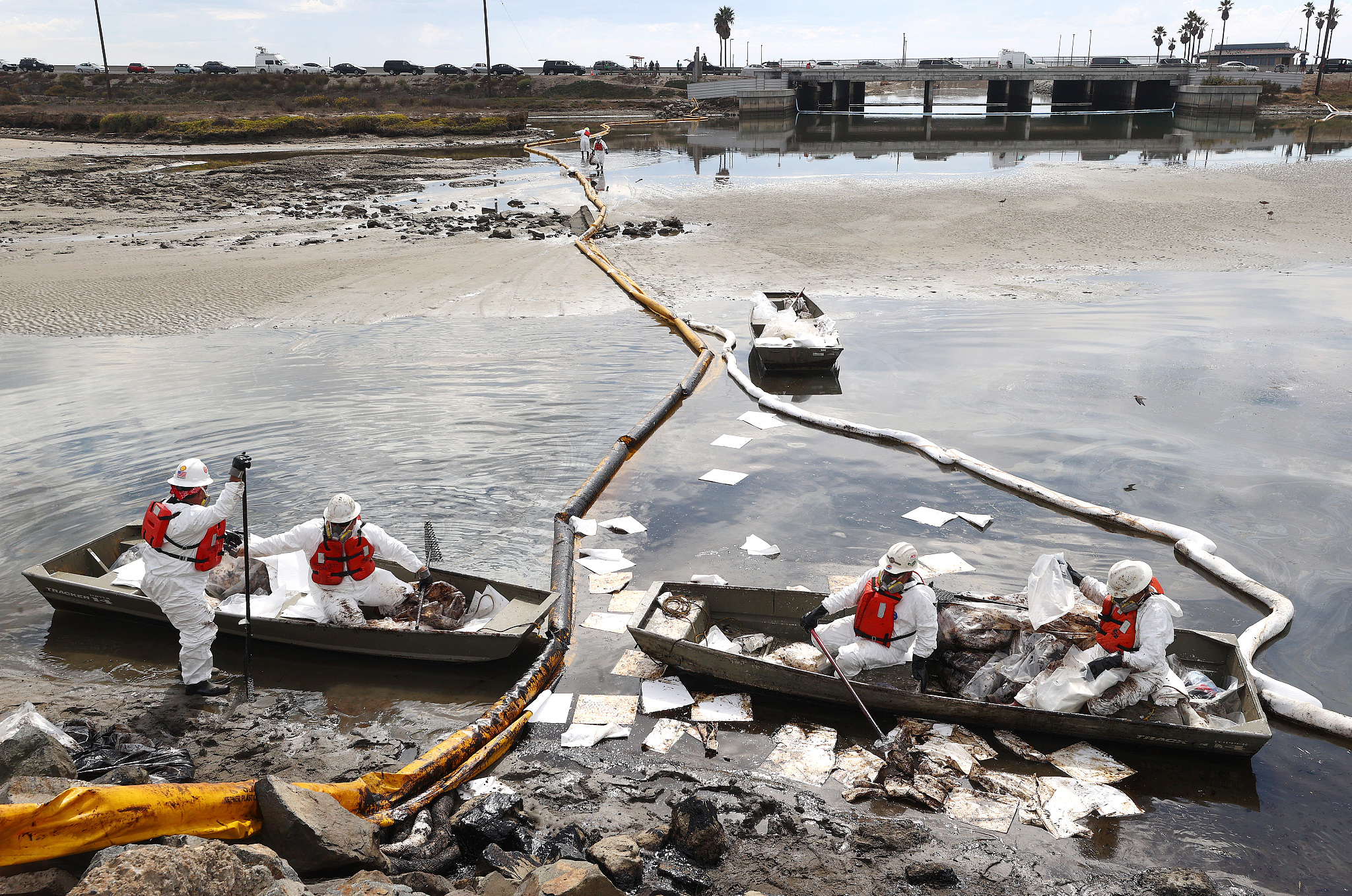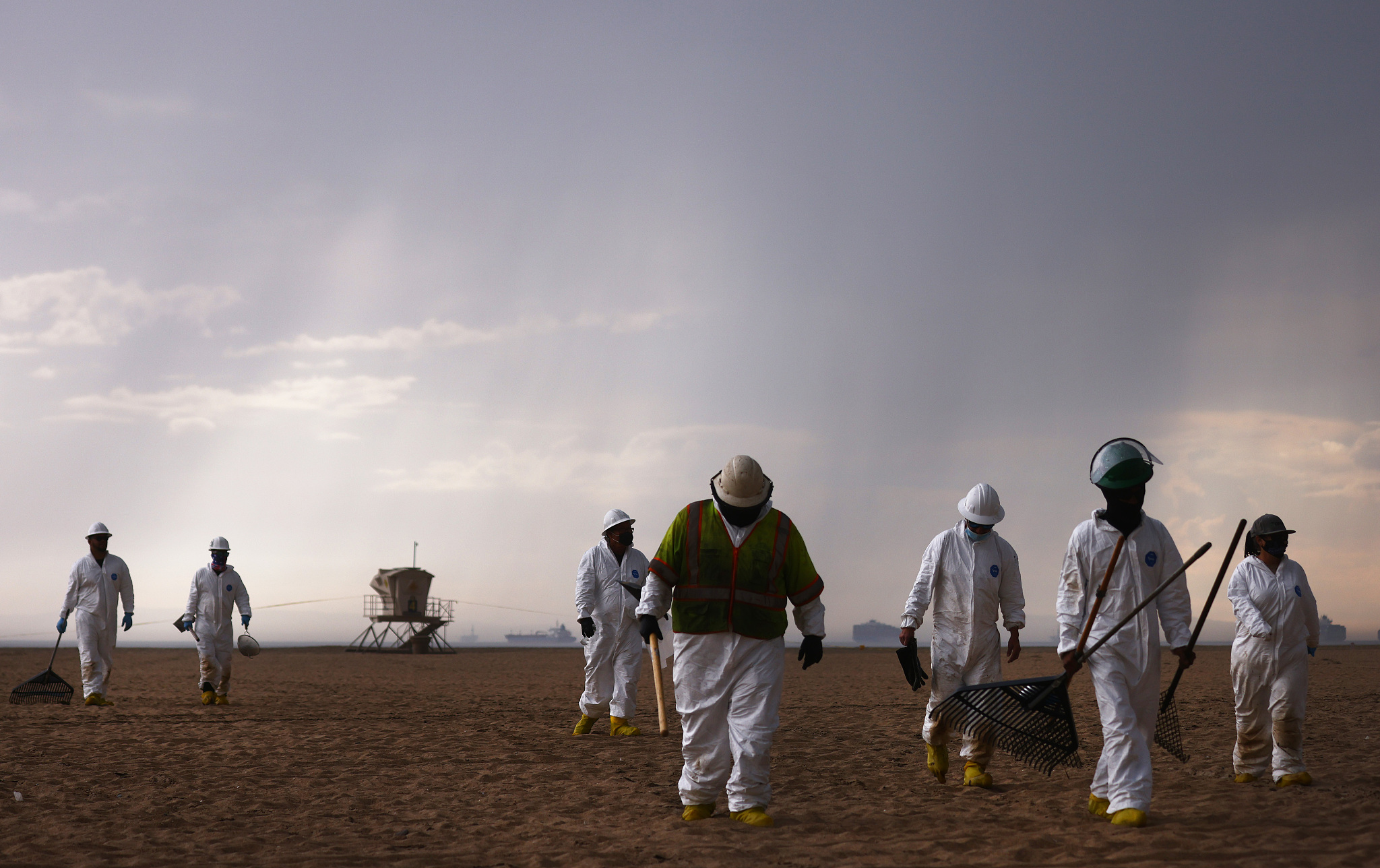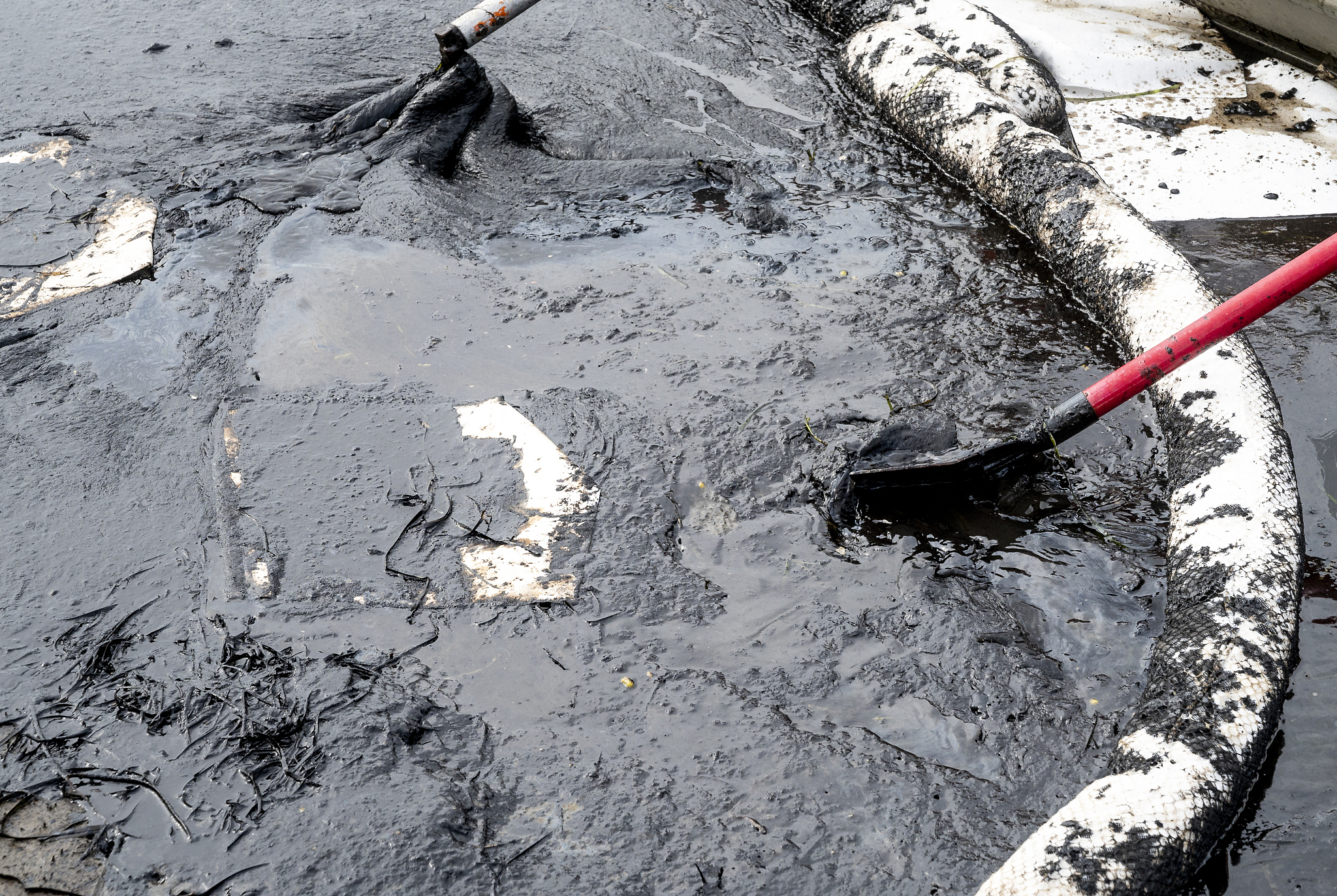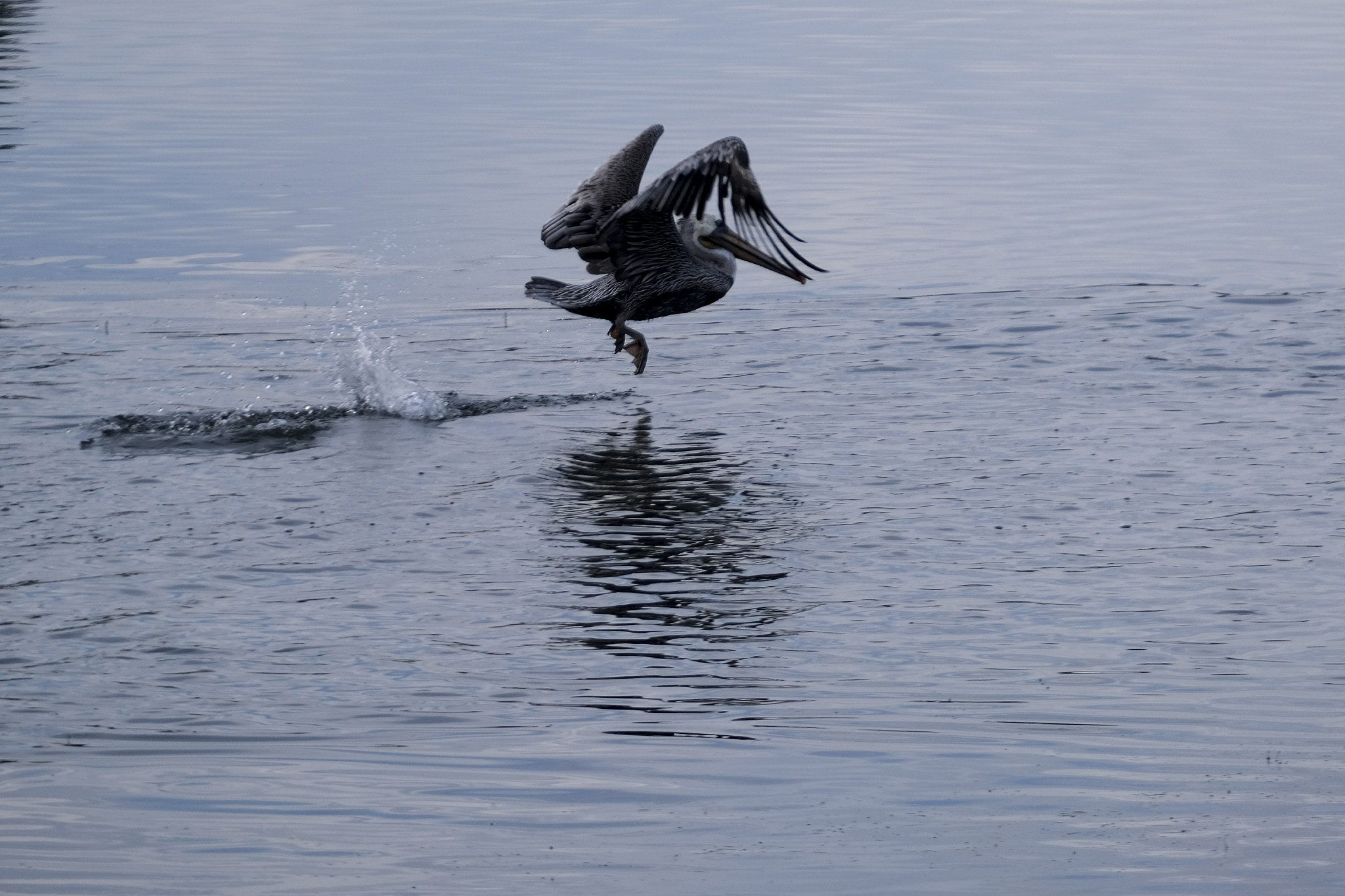An investigation is underway into what caused the oil spill off California's coast on Sunday which has leaked over 3,000 barrels of oil into the Pacific Ocean, forced beaches to be closed and is expected to bring significant ecological damages.
The spill is suspected to have originated in a 27.8-kilometer pipeline connected to an offshore oil platform.

Workers in protective suits clean oil in the area of the Talbert Marsh wetlands near Huntington Beach, California, October 4, 2021. /VCG
Workers in protective suits clean oil in the area of the Talbert Marsh wetlands near Huntington Beach, California, October 4, 2021. /VCG

Cleanup workers in protective suits depart the closed Huntington State Beach, California, as a storm approaches after an oil spill from an offshore oil platform, October 4, 2021. /VCG
Cleanup workers in protective suits depart the closed Huntington State Beach, California, as a storm approaches after an oil spill from an offshore oil platform, October 4, 2021. /VCG

Workers with Patriot Environmental Services mop up oil at Talbert Marsh in Huntington Beach, California on October 4, 2021. /VCG
Workers with Patriot Environmental Services mop up oil at Talbert Marsh in Huntington Beach, California on October 4, 2021. /VCG
Investigators are looking into whether a ship’s anchor may have struck an oil pipeline on the ocean floor, causing heavy crude to leak into coastal waters and foul beaches.
An anchor from a cargo ship striking the pipeline is “one of the distinct possibilities” behind the leak, Martyn Willsher, CEO of Amplify Energy that operates the oil program, told a news conference. He said divers have examined more than 2,438 meters of the pipeline and were focusing on “one area of significant interest.”
Cargo ships entering the twin ports of Los Angeles and Long Beach routinely pass through the area, Coast Guard officials said. Backlogs have plagued the ports in recent months and several dozen or more of the giant vessels have regularly been anchored as they wait to enter the ports and unload.
Safety advocates have pushed for years for federal rules that would strengthen oil spill detection requirements and force companies to install valves that can automatically shut down the flow of crude in case of a leak. The oil and pipeline industries have resisted such requirements because of the high cost.
The pipeline was built using a process known as electric resistance weld, according to a regulatory filing from the company. That welding process has been linked to past oil pipeline failures because corrosion can occur along seams, according to government safety advisories and Pipeline Safety Trust Director Bill Caram.
Meanwhile, questions are mounting about Amplify Energy and its regulators as aging pipelines have also added to the list of possible causes. The pipeline that has been put under the spotlight: San Pedro Bay pipeline was built 41 years ago.
The Associated Press reported on Monday that Amplify Energy has been cited 72 times for safety and environmental violations that were severe enough that drilling had to be curtailed or stopped to fix the problem.
Regulators have failed to address risks from idled pipelines, platforms and other infrastructure on the sea floor, the watchdog U.S. Government Accountability Office (GAO) said this year.
“As pipelines age, they are more susceptible to damage from corrosion, mudslides and sea floor erosion,” GAO said.
Residents, business owners and environmentalists also have been questioning whether authorities had reacted quickly. The Los Angeles Times, citing documents it obtained, reported late Monday that government officials knew about the spill more than 10 hours before it was reported by Amplify.
The latest spill is expected to affect an area home to threatened and endangered species, including the snowy plover, a shorebird, and humpback whales. So far, only a few birds have been affected by the leak, but based on past experience, more fish will be washed on shore and more dead birds will be found in the coming days.

A pelican takes off from the oil floats on the water surface in Talbert Marsh after an oil spill in Huntington Beach, California, on October. 4, 2021. /VCG
A pelican takes off from the oil floats on the water surface in Talbert Marsh after an oil spill in Huntington Beach, California, on October. 4, 2021. /VCG
Statistics show that thousands of oil spills occur in U.S. waters each year, but most are small in size, spilling less than one barrel of oil.
However, since the notorious oil well blowout in Santa Barbara of California in 1969, at least 44 oil spills, each over 10,000 barrels of oil, have been recorded in U.S. waters, the largest of which was the 2010 deepwater horizon well blowout in the Gulf of Mexico.
(With input from AP and Reuters)
(Cover photo via VCG)
(If you want to contribute and have specific expertise, please contact us at nature@cgtn.com.)

